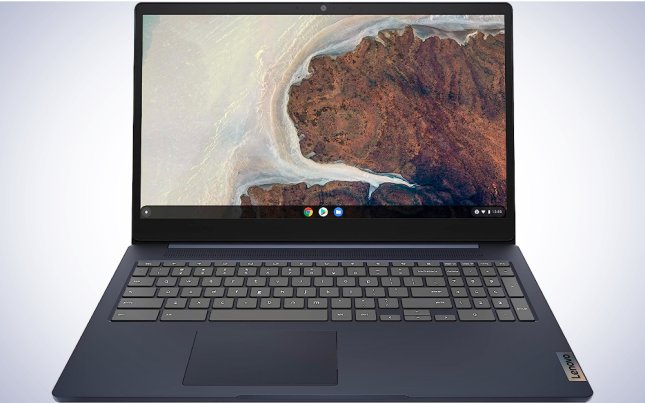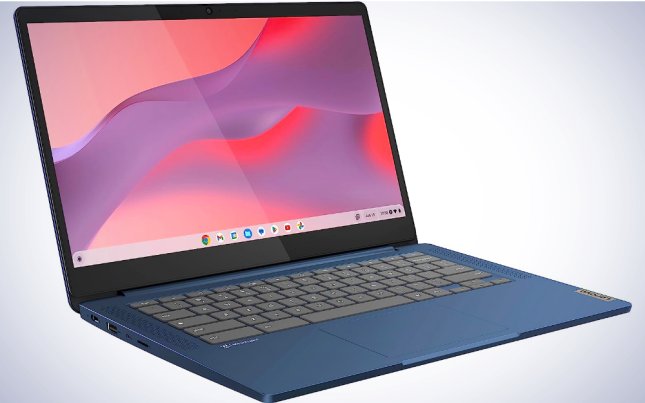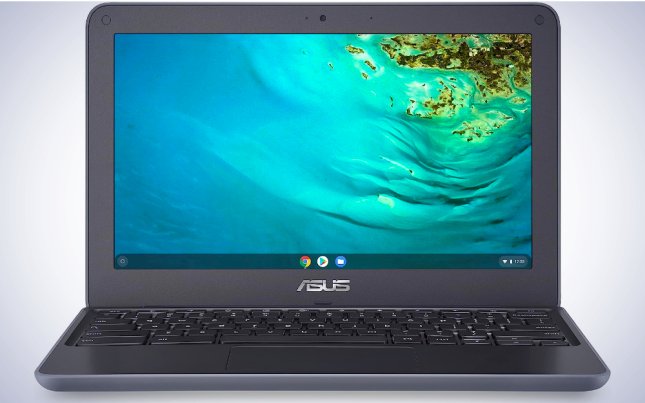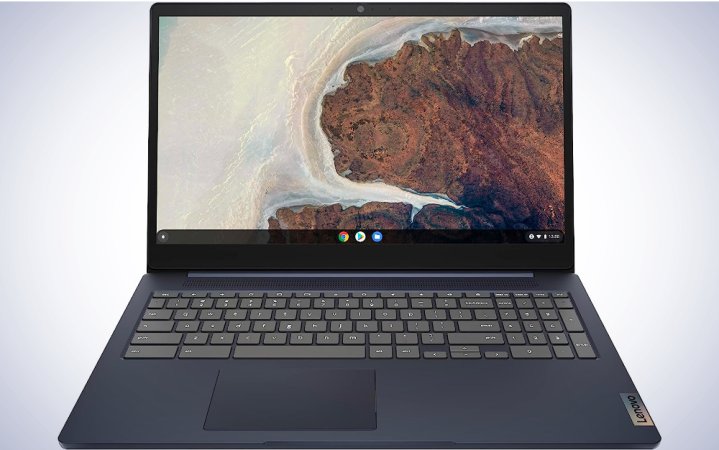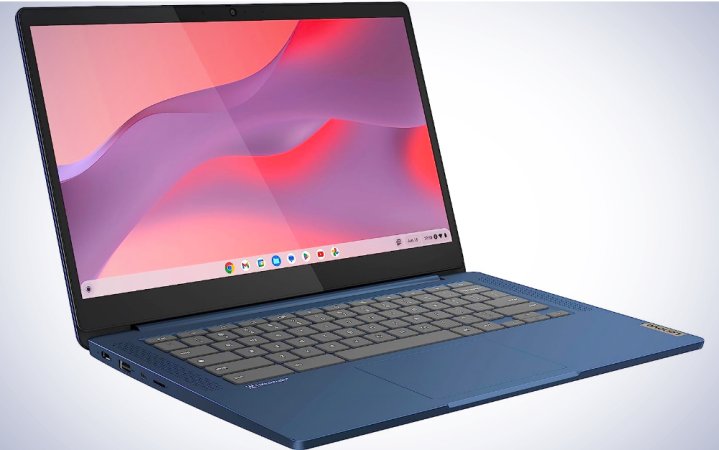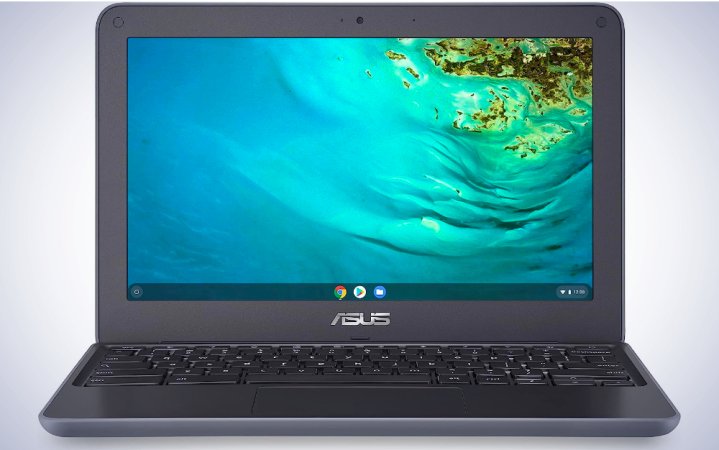We may earn revenue from the products available on this page and participate in affiliate programs. Learn more ›
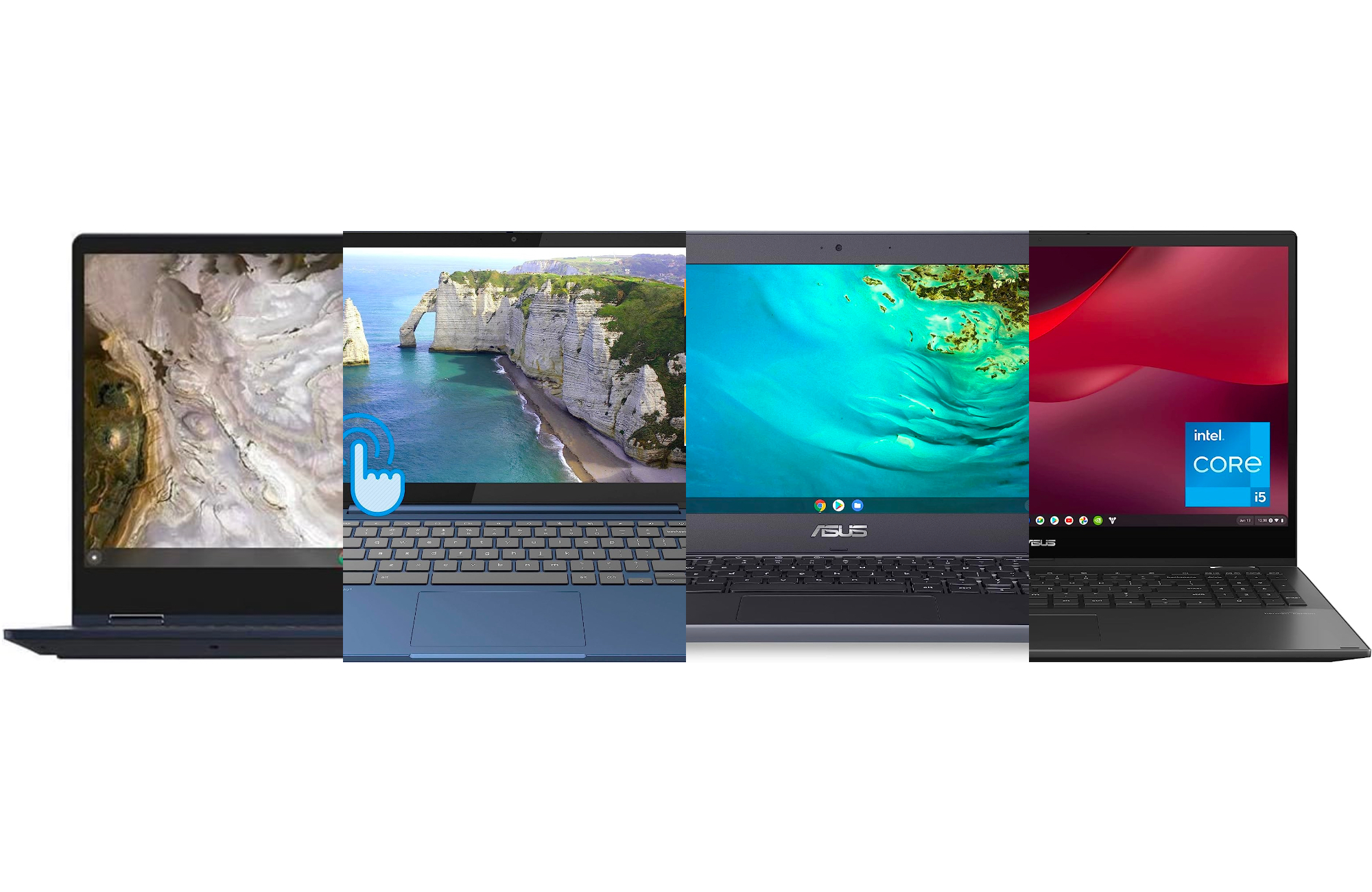
If you are looking for an inexpensive computer for students on a budget, look no further than a cheap Chromebook when back-to-school shopping. These machines run ChromeOS rather than Windows or macOS and, while the operating system is much more lightweight, can handle the most common scholastic tasks—writing documents, creating presentations, reading, and sending e-mail—with ease. Don’t worry; you can still use these machines to stream video and play lightweight browser games. Ultimately, the best Cheap Chromebooks are a viable alternative to PCs and Macs if your needs are modest.
- Best overall: Lenovo 3i Chromebook
- Best touchscreen: Lenovo ideaPad Slim 3
- Best budget: ASUS Chromebook C203XA
The best cheap Chromebooks: Reviews & Recommendations
Best overall: Lenovo 3i Chromebook
Lenovo 3i Chromebook
Pros
- Large screen
- Plenty of memory
- Packed with ports
Cons
- Comparatively low storage compared to PCs
Specs
- Screen size: 15.6-inches
- RAM: 8GB
- Storage: 64GB
- Touchscreen: No
- Battery life: 10 hours
The Lenovo 3i is a good all-around cheap Chromebook, with no significant downsides apart from its relatively low amount of storage. While a 64GB SSD wouldn’t be sufficient for a PC or Mac, it’s enough for a computer that mostly relies on you storing and managing your data on the Internet. That con is outweighed by the computer’s 8GB of RAM (memory), allowing you to keep a handful of browser tabs open simultaneously without slowing the machine down. You’ll also appreciate the machine’s 15.6-inch HD display, which is actually on par with the type of screen you’d get from a PC laptop.
Another area where Lenovo exceeded our expectations was with the 3i Chromebook’s selection of ports. The laptop has two USB-A ports, a USB-C port, an HDMI port, a headphone jack, and a MicroSD card slot. If its internal drive starts filling up, you could pop a MicroSD card into the 3i to permanently augment its storage. A 256GB MicroSD card only costs $20, which makes it a cost-effective upgrade even if it won’t be quite as fast at reading and writing data as the machine’s internal SSD.
One feature on this machine that’s absent on some others is a full-sized keyboard, which includes a number pad on the right-hand side for easy access. This is a small thing but it could make the jump from using a desktop computer to a cheap Chromebook that much more seamless. If you’re shopping for a laptop and can stretch your budget to $300—the upper limit of a “cheap” Chromebook in our view, you’ll be very pleased with Lenovo’s 3i.
Best touchscreen: Lenovo ideaPad Slim 3
Lenovo ideaPad Slim 3
Pros
- Touchscreen display
- Ultra-light
- Long battery life
Cons
- Low storage compared to PCs
Specs
- Screen size: 14-inches
- RAM: 4GB
- Storage: 64GB
- Touchscreen: Yes
- Battery life: 13.5 hours
If your current computer has a touchscreen, or you’ve always wanted this feature in a laptop, Lenovo’s ideaPad Slim 3 is an excellent cheap Chromebook. At 2.86 pounds, it’s a lot lighter than most bigger-screen laptops, which makes a big difference if you’re a student lugging around a computer in your bag. While it’s less expensive than our best overall pick, the ideaPad Slim 3 has a lot of the same tech specs as Lenovo’s higher-end machine. It even bests it in battery life, lasting up to 13.5 hours, according to Lenovo.
This cheap Chromebook has a Full HD display and 64GB of storage, plus a MicroSD card if you’d like to add some more space. It only has 4GB of RAM, so you probably won’t want to have as many Chrome tabs open. That said, the machine still has enough memory for everyday use. Surprisingly, this laptop supports both Bluetooth 5.1 and WiFi 6, which we wouldn’t expect given its price. While the ideaPad Slim 3’s port selection is a little more sparse—you’ll get one USB-A port, a USB-C port, and a headphone jack—it covers all the basic bases.
Phones and tablets have understandably made touchscreens a must-have laptop feature for many people. If you count yourself among them and want a well-specced Chromebook for well under $300, Lenovo’s ideaPad Slim 3 is the one to pick up.
Best budget: ASUS Chromebook C203XA
ASUS Chromebook C203XA
Pros
- Compact size
- HD screen
- Price
Cons
- Very low storage
Specs
- Screen size: 11.6-inches
- RAM: 4GB
- Storage: 32GB
- Touchscreen: No
- Battery life: 10 hours
ASUS’ Chromebook C203XA is not only the least expensive Chromebook we’re recommending, but it’s also the smallest and lightest. Despite its compact size, this laptop has a lot to like because ASUS didn’t cut corners. The biggest surprise is that this Chromebook’s 11.6-inch display is HD, so videos, text, and photos will look very sharp. Similarly, the C203XA has an HDMI port, allowing you to easily connect the cheap Chromebook to an external monitor at a desk. Knowing you can hook it up to a bigger display is significant if you’re a little wary about getting a laptop with such a small screen.
This machine’s HDMI port is complemented by one USB-A port, one USB-C port, and a full-sized SD Card slot. You’ll want to use the SD card slot to increase the machine’s storage because it only comes with a 32GB SSD. This won’t be a problem if you’re all-in on cloud-based storage and applications but may be a problem if you want to download files to work on them locally. Additionally, this cheap Chromebook supports WiFi 5 and Bluetooth 4.2, which are solid but not quite as fast as their more modern counterparts.
All of these are reasonable compromises considering the ASUS C203XA’s price is just $170 right now—roughly half the cost of our top recommendation. Considering you can fix two of this Chromebook’s biggest weaknesses, that’s an especially good deal.
What if you want a more expensive Chromebook?
Chromebooks are known for their comparatively low prices, but it’s possible to pick up a higher-specced model if you prefer the technically lightweight ChromeOS to Windows and macOS. If that’s the case, the ASUS Chromebook Vibe C55 is our top Chromebook recommendation. The machine has a 15.6-inch HD 144Hz touchscreen and is equipped with 16GB of RAM, a 512GB SSD, and a speedy Intel i5 processor. ASUS is confident enough in these specs that it’s throwing in a free three-month subscription to NVIDIA’s GeForce NOW game streaming service with purchase.
ASUS’ high-end machine also comes with two USB-C ports, one USB-A port, a MicroSD card slot, an HDMI port, and a headphone jack. Nice-to-have features include a backlit keyboard and a hinge that allows you to flip the screen over the back of said keyboard to use this laptop like a tablet. On paper, the ASUS Chromebook Vibe C55 is a true competitor to midrange Windows PC laptops, but its $619.49 price tag is also in line with those machines.
FAQs
A decent Chromebook can be had for well under $200 if you shop around and wait for a sale.
Google officially supports Chromebooks with several years of automatic updates—importantly, this is from the time they’re released, not when you purchase one—and has a tool in ChromeOS to show how long your system will be updated. The hardware itself will continue to work for a short period even after it stops receiving updates.
This depends on the software you need to get your work done. In some cases, a Chromebook is a perfectly fine substitute for a traditional PC laptop.
Chromebooks are reliable, durable, and support administrative controls that make them easy for a school to manage.
Yes. ChromeOS is a lightweight enough operating system that 4 gigabytes of RAM is sufficient for many people’s needs.
Final thoughts on the best cheap Chromebooks
Cheap Chromebooks are a legitimate option for many people who want a laptop but don’t want to spend the prices many companies charge for a cheap PC or MacBook Air. There are advantages to those systems, specifically where content creation (video, photo, or audio editing), gaming, and overall application support are concerned. Still, if you’re shopping around for a computer for a younger person or student or don’t need a machine that pushes the limits, a cheap Chromebook may be the ideal solution.
